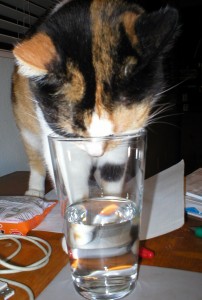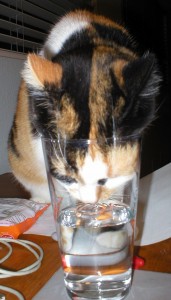![]()
![]()
![]()
![]()
![]()
![]()
sawūrre
one’s voice.
![]()
![]()
![]()
![]()
![]()
![]()
sawūrre
one’s voice.
![]()
![]()
![]()
![]()
![]()
![]()
![]()
sacīxen
one’s sneeze.
Coughing and sneezing, among other things, share qualities with speech. Speech is generally denoted with se. For example:
talla jāo ien sele jālne to jāo;
I said that I like that.
When speech is absolutely quoted, the word jasōra, or even sasōra (though speech isn’t usually considered a body part) is used.
tamma sasōra ien sele jālne to jāo;
She said, “I like that.” (She emitted her words which equal “I like that.”)
So what does this have to do with sneezing?
One way to say that someone sneezed is to use ñi
ñi sacīxen;
She sneezed. (Her sneeze came into existence.)
Another way is to use se:
tamma sacīxen;
She sneezed. (She emitted her sneeze.)
The difference is that with se, the sneeze uses the exact same syntax as speech. And so,
tamma jacīxen;
She sneezed. (She emitted a sneeze.)
is perfectly okay as a sentence.
![]()
![]()
![]()
![]()
![]()
![]()
sakāha
one’s cough.
![]()
![]()
![]()
![]()
![]()
![]()
sapīþa
one’s spit.
![]()
![]()
![]()
![]()
![]()
![]()
sapāta
one’s fart.
While bodily fluids can generally be associated with a person, body expressions sometimes can’t. So, japāta is a popular variation, especially in idioms.
ñi sapāta;
Someone farted/made a fart. se japāta is unlikely in this context.
samma sapāta;
He’s farting. Meaning, “He’s talking bull.” samma japāta is a popular variant.
![]()
![]()
![]()
![]()
![]()
![]()
sawūta
one’s feces or shit. This is a bad word in Kēlen.
Rather than give you a picture of DC from today, these are from 2 days ago:
Step 1:

Step 2:

![]()
![]()
![]()
![]()
![]()
![]()
sarēxa
one’s urine or piss.
The bodily fluids are generally classed as body parts and thus obligatorily possessed. But there are some dialects that class these as collective nouns (like most other liquids).
![]()
![]()
![]()
![]()
![]()
![]()
sawūna
one’s sweat;
![]()
![]()
![]()
![]()
![]()
![]()
sapāla
one’s tears.
ñi sapāla sū anxūri hāl sū jēwāri nū;
He wept in front of the gates beside the lakes.